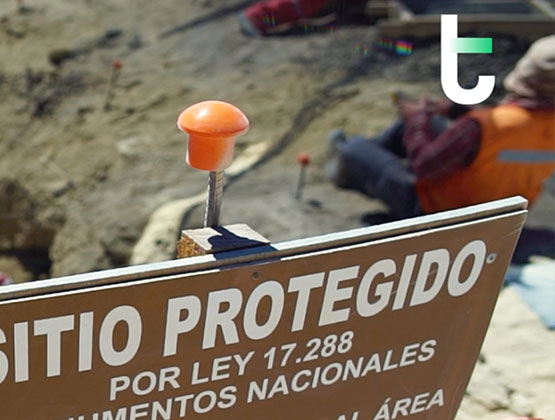Challenge #16
Remote Archeological Monitoring
During the execution of works, especially in areas in northern Chile, we frequently come across unexpected archeological findings in the subsoil. This generates shutdowns, design modifications, lengthy delays and significant costs. The findings may include various materials such as ceramic, textiles, metal remains, glass, lithic remains, shell middens, bones and bone remains, among others. Early detection of this evidence would allow us to make better decisions and prevent costs.
We are looking for solutions that allow us to anticipate the presence of archeological remains or risk areas before intervening in a piece of land through scanning technologies, predictive models or the use of existing data.
We are particularly interested in the possibility of combining georeferenced historical data (records of findings, presence of Indigenous peoples, areas of cultural interest) with field information and subsoil scanning to estimate probabilities of findings in each construction area.

Technical Description of the Challenge
We want to test solutions that allow us to identify areas with a high or low probability of findings, not only by means of physical scanning but also through predictive modelling based on existing archeological databases, historical maps and cultural information layers.
Validation Expected in the Pilot
- 1.- Ability to integrate historical and predictive data.
- 2.- Early detection of areas with potential findings.
- 3.- Field operation without depending on specialists 100%.
- 4.- Results validated by an archeologist with documentary support.
How Will the Pilot Work?
- – Duration: Up to 3 months.
- – Application in areas with archeological history and projected layouts.
- – Subsequent validation by archeologists.
- – Autonomous use and fast implementation.
Initial Application Checklist
- – You have a technology, product or service applicable to this challenge.
- – You have a product validated in the market.
- – You have a full-time dedicated team.
- – You have a formalized company.
- – (Ideal) Your solution combines scanning or modelling with georeferenced historical data.
Driving Questions
- How could we anticipate archeological findings through a combined use of sensors and historical data?
- How could we integrate existing heritage databases into a predictive tool?
- How could we reduce delays and costs without compromising legal and heritage compliance?
- What current technologies could detect bone remains or archeological materials without invasive excavation?
- How could we provide our teams with reliable information for planning the layout with less archeological risk?

